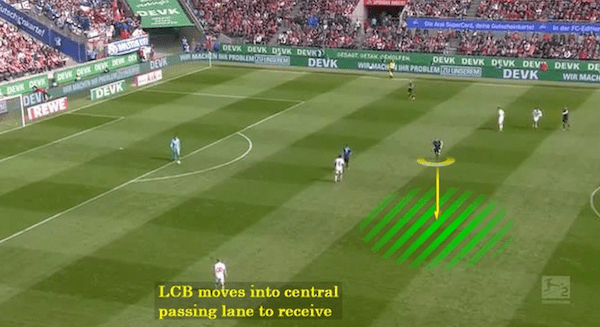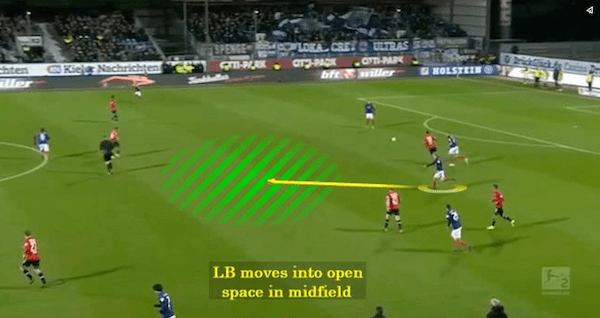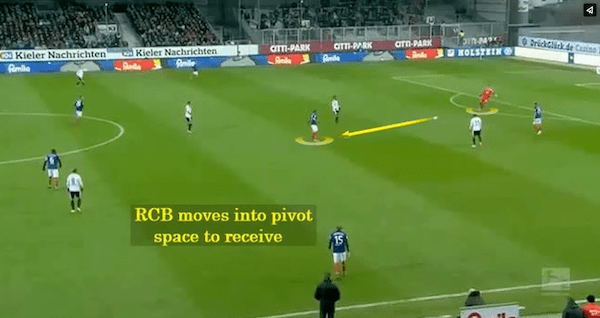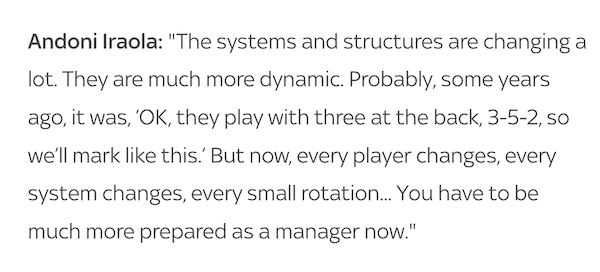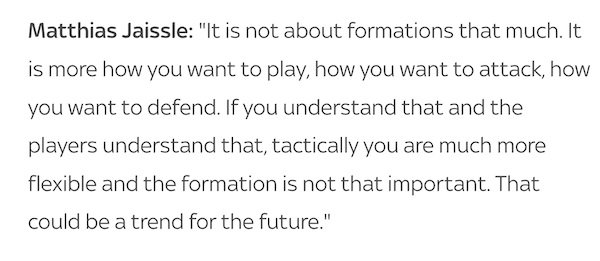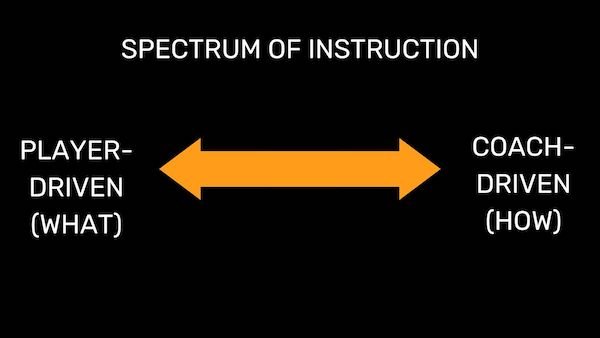Dribble or Pass: Have we conditioned risk-averse players?
You'll often hear coaches, especially youth coaches, say something like "Get it off your feet" as if dribbling is the riskiest action to take.
But is it?
Frenkie De Jong and Oriol Romeu are the perfect example of this debate?
This video perfectly depicts what I am trying to convey. We see the vast contrast between each player's preference.
Romeu: Pass the way you face to build up collectively = Safe?
De Jong: Turn your direct opponent to build up with one run = Risky?
Let’s start with a little bit of background to better understand these players.
Oriol Romeu is La Magia product. He came up through the ranks of the famed Barcelona Academy. Eventually, he left for the Premier League and joined Chelsea.
His experience playing for Barcelona’s youth teams most likely shaped him to play in a particular way: Pass is better than a dribble.
Frankie De Jong is a product of a Willem II, a small Dutch club. He played his entire youth career there before making a move to Ajax II at the age of 18.
His experience playing for a smaller club in the Netherlands, as well as the couple of years he spent playing for Ajax’s second team, most likely shaped him to play like he plays today: Dribble over pass.
Of course, this is a huge generalization and I am making quite the assumption but from what we know about both cultures it’s very likely that the player behaviors we are seeing from these players are a result of the environment that they grew up in.
Which brings us back to our original question, is a pass safer than a dribble?
Ajax, and perhaps Willem II, might argue that dribbling to progress would be a priority in the build up. Or at least, they do not discourage players from dribbling to progress up to the pitch.
There are many videos of Ajax’s youth team using the dribble to progress like this one:
On the other hand, it’s no secret that Barcelona would much rather players pass to build up.
At first glance, you might think that this comes down to a question of which tool (dribble or pass) is less likely to lose the ball. However, I actually think it’s something different that triggers coaches.
IT’S ALL ABOUT THE STRUCTURE
I believe it’s about positional structure of the team.
When a player dribbles to progress the ball, they are leaving the position they have been ‘assigned’. For example, if a center back dribbles to progress the ball, like the clip of the Ajax youth player, we assume they are leaving their position vacant. The assumption is if the player loses the ball, who is going to defend as the center back?
We have been conditioned to think the backline cannot go anywhere. They are the base of the team, therefore, they must stay in their position. We happily accept players rotating positions in the midfield line or front line but the back line is immovable.
The norm in football is in the first phase of a build up, when the back line is on the ball, the ball needs to be move but they cannot.
CHALLENGING THE NORM
Back in 2018 and 2019, Tim Walter’s Holstein Kiel challenged this norm. Within their first phase of the build-up, they often rotated the center-backs into the midfield.
You can always tell how ‘surprising’ a tactic is by how much reach it ends up having. In this case, a second division German team was causing all kinds of waves in the tactical talks. That’s when you know they are doing something that is counter-culture. (Fluminense is another example)
MANCHESTER CITY’S NEW FLUID FOOTBALL
In fact, in City’s opening game of the 23/24 season against Burnley, we saw a similar tactic.
Ake, who was tasked in the role of center back, often finds himself dribbling towards the opposition backline. You can also see that the last players in City’s backline often aren’t who you would imagine, Bernardo Silva often occupying that role.
They constantly interchange who is in that role in an attempt to disorganize the opposition.
THEORY BEHIND THE CHANGE
Over time, football has become more and more risk averse. Which is a logical conclusion to keeping the backline staying positionally fixed.
The objective of the game is to score more goals than the opposition, so if in your pursuit of scoring you give up a goal, then by definition you have failed in that moment of the game.
For nearly a century, our best tactic to keep goals out of our goal was to keep a line of players in front of the goal. Do not ever move them.
As I have pointed out, this idea is in fact changing and I am thrilled about it. I believe that this is the way forward. It’s football that is fluid by nature, and that’s exactly where the sport is moving.
Football in the future is going dynamic in nature, and this will require players who have a variety of different skill sets and are able to identify and solve problems. This means that their training environment should reflect that.
PRACTICAL IMPLICATIONS
As a coach, this is something that I have been thinking about for a long time: how do we prepare players to play dynamic, fluid football?
It all starts with Player-Driven Playing Style Principles. This means that the player has the choice about how to solve the football problem within the playing style of the team. In the Game Model Development Workshop we discuss this at length. It’s fundamental knowing where you fall on the Spectrum of Instruction.
Secondly, understanding what you are standardizing in terms of Playing Style Principles. For example, if you unconsciously direct attention and constrain players the ‘correct’ position in a certain phase of play, then you can forget about fluid football.
This is something that will be covered in the Training Development Workshop.
Lastly, how well do you know your team behaviors and player behaviors in relation to opponents. This requires an ability to observe your own team in matches like you would observe an opposition.
For example, if you are unable to see and notice patterns, both competent and incompetent, in your own team, then you will never be able to help your players achieve the football they desire.
I am incredibly excited about where football is going and I am want to make sure I am preparing my players for where football will be in five to ten years.
What about you?

